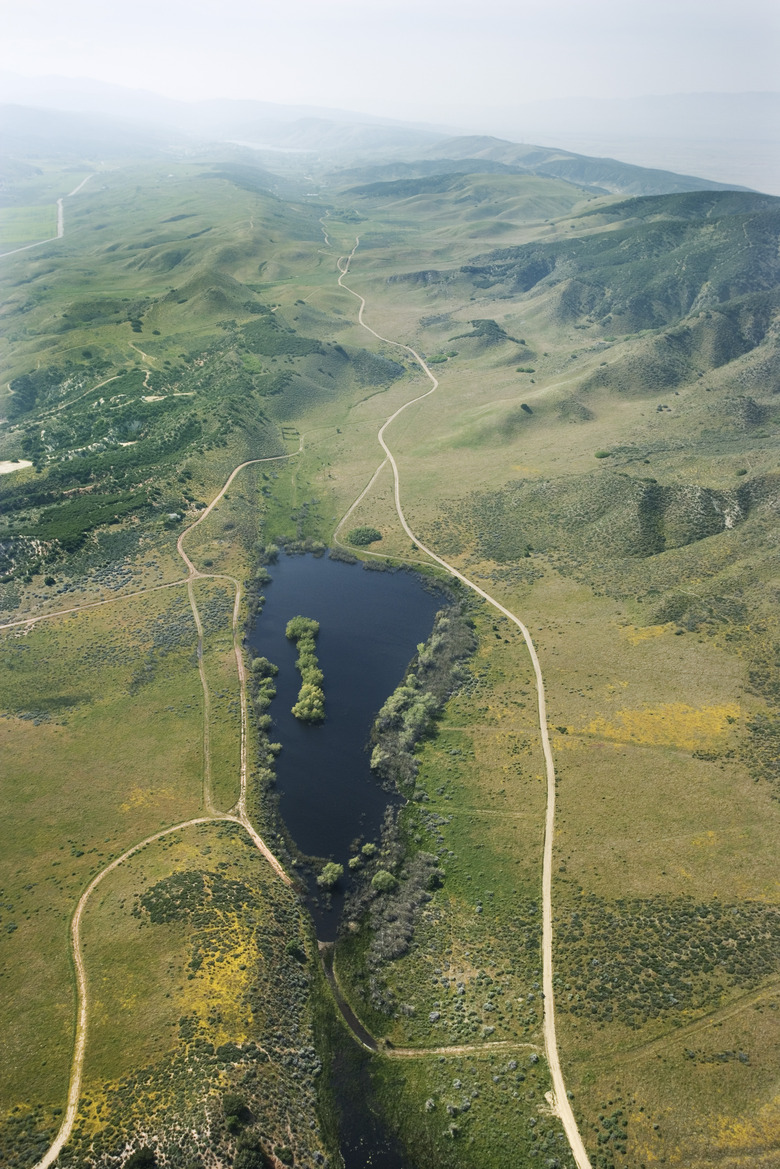Adaptations To Earthquakes
Implementing adaptations to earthquakes can help governments, business owners and individuals prevent loss of life and property damage in areas prone to such disasters. These adaptations range from efforts to secure small household items to the reinforcement of huge structures like bridges and office buildings. Large-scale measures often prove costly, but they have already yielded great benefits in places like Japan.
Buildings
Buildings
When earthquakes occur, structural adaptations do much to prevent the damage or destruction of buildings. Encarta indicates that builders reinforce some structures against earthquakes with bracing. Relatively small buildings made of wood prove less susceptible than those constructed of rock-like materials such as concrete. It's possible to enact structural adaptations during construction or to reinforce old buildings. Some newer structures in California and Japan feature a flexible design which causes them to sway during earthquakes rather than collapse, according to Public Radio International.
Small Objects
Small Objects
Homeowners, apartment dwellers and office workers can adapt various indoor items to prevent them from falling long distances. It's possible to brace shelves so that they don't easily fall over in earthquakes, according to Encarta. The U.S. Geological Survey lists additional adaptations such as strapping water heaters to wall studs and putting latches on kitchen cabinets. It also recommends using straps and buckles to anchor electronics and small appliances to surfaces (such as desks and kitchen counters).
Transportation
Transportation
Earthquakes sometimes threaten the safety of people in transit, with only airborne vehicles remaining completely safe. The San Francisco Chronicle reported that California's Bay Area established plans in 2008 for retrofitting the subway system to resist earthquakes. Adaptations included compressing the earth surrounding a tunnel and reinforcing some transit buildings and raised tracks. The Golden Gate Bridge, Highway and Transportation District indicates that after an earthquake, authorities improved the Golden Gate Bridge by installing additional bracing, boosting the strength of bridge foundations and adding expansion joints, among other adaptations.
Hazardous Materials
Hazardous Materials
In regions prone to earthquakes, it also is important to adaptations the storage and transport of toxic or highly flammable materials. Keeping hazardous substances close to the floor helps prevent their release during earthquakes, according to the U.S. Geological Survey. The less distance they have to fall, the less chance that the containers will break open. The USGS also recommends using flexible indoor natural gas lines rather than rigid pipes, which may break in earthquakes and start fires.
References
- "Encarta Encyclopedia Standard"; Earthquake; Bruce Bolt; 2004
- San Francisco Chronicle; Bay Area Gets $52 Million in Transit Funds; Michael Cabanatuan; March 2008
- Golden Gate Bridge, Highway and Transportation District: Overview of Golden Gate Bridge Seismic Retrofit Construction Project
- U.S. Geological Survey: Putting Down Roots in Earthquake Country
Cite This Article
MLA
Jensen, William. "Adaptations To Earthquakes" sciencing.com, https://www.sciencing.com/adaptations-to-earthquakes-13418929/. 21 July 2017.
APA
Jensen, William. (2017, July 21). Adaptations To Earthquakes. sciencing.com. Retrieved from https://www.sciencing.com/adaptations-to-earthquakes-13418929/
Chicago
Jensen, William. Adaptations To Earthquakes last modified March 24, 2022. https://www.sciencing.com/adaptations-to-earthquakes-13418929/
